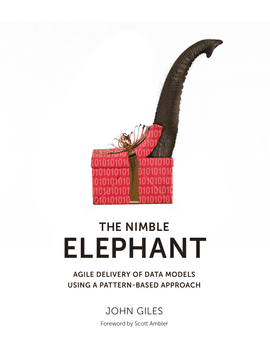UML Requirements Modeling For Business Analysts
UML Requirements Modeling For Business Analysts, by Norman Daoust
This book provides you with a collection of best practices, guidelines, and tips for using the Unified Modeling Language (UML) for business analysis.
Topics
CHAPTER 1: Introduction
Intended Audience
Scope
Organization of This Book
How to Use This Book
Terminology
Stylistic Conventions
And After Reading This Book?
Feedback
About the Author
CHAPTER 2: UML Modeling for Business Analysis
UML History
UML Diagram Categories
CHAPTER 3: General UML Diagram Guidelines
Guidelines
Diagram Notation
Diagram Tips
How-to-Model Tips
Naming Guidelines
CHAPTER 4: Example Model Introduction
Somestate Department of Motor Vehicles Glossary
Somestate Department of Motor Vehicles Business Rules
CHAPTER 5: Use Case Models
Purpose
Guidelines
Diagram Notation
Diagram Examples
Diagram Tips
Use Case Template
Use Case Text Example
Use Case Text Formats
How-to-Model Tips
Naming Guidelines
Modeling Process Summary
Case Study Example Diagram
Relationship to Other UML Diagrams
CHAPTER 6: Activity Diagrams
Purpose
Guidelines
Diagram Notation
Diagram Examples
Diagram Tips
How-to-Model Tips
Naming Guidelines
Modeling Process Summary
Case Study Example Diagram
Relationship to Other UML Diagrams
CHAPTER 7: Interaction Overview Diagrams
Purpose
Guidelines
Diagram Notation
Diagram Example
Diagram Tips
How-to-Model Tips
Naming Guidelines
Modeling Process Summary
Case Study Example Diagram
Relationship to Other UML Diagrams
CHAPTER 8: Class Models
Purpose
Guidelines
Diagram Notation
Diagram Examples
Diagram Tips
Data Element List, Partial Example
Class Model, Partial Text Example
How-to-Model Tips
Naming Guidelines
Modeling Process Summary
Case Study Example Diagram
Relationship to Other UML Diagrams
CHAPTER 9: Object Diagrams
Purpose
Guidelines
Diagram Notation
Diagram Example
Diagram Tips
How-to-Model Tips
Naming Guidelines
Modeling Process Summary
Case Study Example Diagram
Relationship to Other UML Diagrams
CHAPTER 10: State Machine Models
Purpose
Guidelines
Diagram Notation
Diagram Examples
Diagram Tips
State Machine Table Example
How-to-Model Tips
Naming Guidelines
Modeling Process Summary
Case Study Example Diagram
Relationship to Other UML Diagrams
CHAPTER 11: Timing Diagrams
Purpose
Guidelines
Diagram Notation
Diagram Examples
Diagram Tips
How-to-Model Tips
Naming Guidelines
Modeling Process Summary
Case Study Example Diagram
Relationship to Other UML Diagrams
CHAPTER 12: Sequence Diagrams
Purpose
Guidelines
Diagram Notation
Diagram Examples
Diagram Tips
How-to-Model Tips
Naming Guidelines
Modeling Process Summary
Case Study Example Diagram
Relationship to Other UML Diagrams
CHAPTER 13: Communication Diagrams
Purpose
Guidelines
Diagram Notation
Diagram Example
Diagram Tips
How-to-Model Tips
Naming Guidelines
Modeling Process Summary
Case Study Example Diagram
Relationship to Other UML Diagrams
CHAPTER 14: Composite Structure Diagrams
Purpose
Guidelines
Diagram Notation
Diagram Example
How-to-Model Tips
Naming Guidelines
Modeling Process Summary
Case Study Example Diagram
Relationship to Other UML Diagrams
CHAPTER 15: Component Diagrams
Purpose
Guidelines
Diagram Notation
Diagram Example
Diagram Tips
How-to-Model Tips
Naming Guidelines
Modeling Process Summary
Case Study Example Diagram
Relationship to Other UML Diagrams
CHAPTER 16: Deployment Diagrams
Purpose
Guidelines
Diagram Notation
Diagram Example
Diagram Tips
How-to-Model Tips
Naming Guidelines
Modeling Process Summary
Case Study Example Diagram
Relationship to Other UML Diagrams
CHAPTER 17: Package Diagrams
Purpose
Guidelines
Diagram Notation
Diagram Examples
Diagram Tips
How-to-Model Tips
Naming Guidelines
Modeling Process Summary
Case Study Example Diagram
Relationship to Other UML Diagrams
CHAPTER 18: Context Diagrams Using Communication Diagram Notation
Purpose
Guidelines
Diagram Notation
Diagram Example
Diagram Tips
How-to-Model Tips
Naming Guidelines
Modeling Process Summary
Case Study Example Diagram
Relationship to UML Diagrams
CHAPTER 19: Data Models Using Class Diagram Notation
Purpose
Guidelines
Diagram Notation
Diagram Example
Diagram Tips
How-to-Model Tips
Naming Guidelines
Modeling Process Summary
Case Study Example Diagram
Relationship to UML Diagrams
CHAPTER 20: Which Diagrams Do I Create and When?
CHAPTER 21: Case Study
Case Study Overview
Case Study Modeling Process
APPENDIX A: Glossary
APPENDIX B: Grammar Summary for Modelers
APPENDIX C: Analysis Datatypes
APPENDIX D: References
The contents have been assembled over the years based on experience and documented best practices. Over sixty easy to understand UML diagram examples will help you to apply these ideas immediately. If you use, expect to use, or think you should use the Unified Modeling Language (UML) or use cases in your business analysis activities, this book will help you:
- communicate more succinctly and effectively with your stakeholders including your software development team,
- increase the likelihood that your requirements will be reviewed and understood,
- reduce requirements analysis, documentation, and review time.
The first three chapters explain the reasons for utilizing the UML for business analysis, present a brief history of the UML and its diagram categories, and describe a set of general modeling guidelines and tips applicable to all of the UML diagram types. Each of the next thirteen chapters is dedicated to a different UML diagram type:
- Use Case Diagrams
- Activity Diagrams
- Interaction Overview Diagrams
- Class Diagrams
- Object Diagrams
- State Machine Diagrams
- Timing Diagrams
- Sequence Diagrams
- Communication Diagrams
- Composite Structure Diagrams
- Component Diagrams
- Deployment Diagrams
- Package Diagrams
The next two chapters explain additional diagram types that are important for business analysts and that can be created using UML notation:
- Context Diagrams using Communication diagram notation
- Data Models using Class diagram notation
These chapters are followed by a chapter that describes criteria for selecting the various diagram types. The final chapter presents a case study.
About Norman
Norman Daoust is a business analyst trainer, requirements modeler, data modeler, healthcare electronic data exchange specialist, fretted instrument specialist, and organic gardener. He is the principal consultant for Daoust Associates, a company based in Cambridge, Massachusetts, United States. He specializes in business analyst training, information modeling, and healthcare systems data integration.
Faculty may request complimentary digital desk copies
Please complete all fields.





